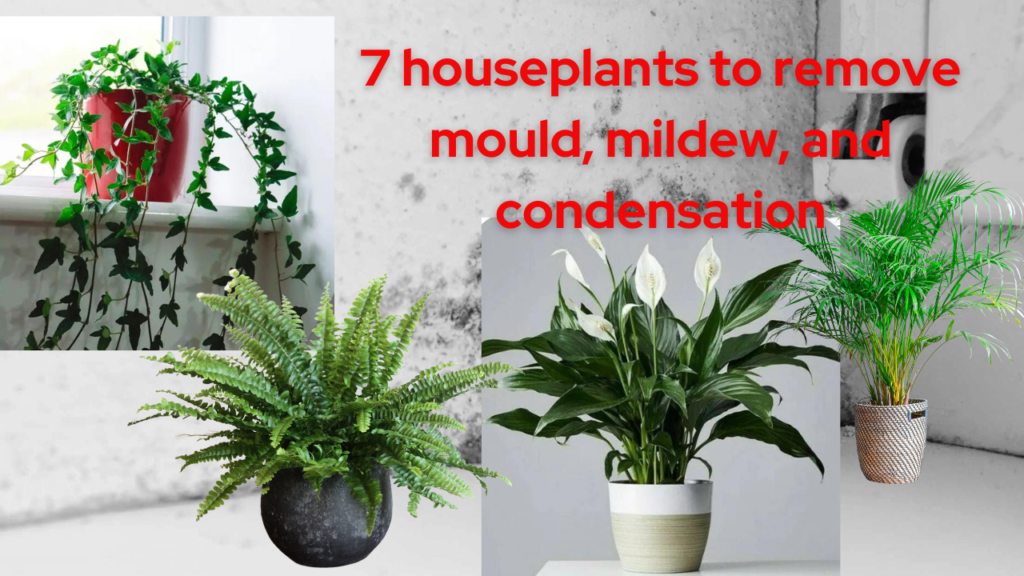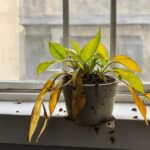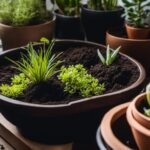7 Best houseplants that act as ‘natural dehumidifiers’ to remove mold (mould), mildew, and condensation in winter
Houseplants can help improve indoor air quality and reduce mold, mildew, and condensation by increasing humidity levels and filtering the air. While they won’t completely eliminate these issues, they can be a helpful addition to your efforts to maintain a healthy indoor environment. Here are seven house plants that can particularly remove mold, condensation, and mildew.

7 Best houseplants to remove mold, mildew, and condensation
The best houseplant to remove mold and mildew is English Ivy (Hedera helix):
English ivy is a vigorous climber that can be grown indoors or outdoors. It is one of the best houseplants for removing mold and mildew, as it absorbs moisture from the air and its leaves contain compounds that can kill mold spores. However, it is important to note that English Ivy is poisonous to pets and children, so it should be kept out of reach. It can also be trained to climb along walls or trellises, making it a decorative addition to your home.
You can check the Top 10 Indoor Plants Safe for Cat
Houseplants to remove condensation is Peace Lily (Spathiphyllum):
Peace lily is a beautiful flowering plant that is also effective at removing mold and mildew. It prefers humid environments, so it is a good choice for placing in bathrooms or kitchens. it is the best houseplant for condensation from your house. Peace Lilies also produce white flowers that bloom throughout the year, adding a touch of elegance to any room.
Houseplants to remove condensation is Palm Plants (various types):
Palm plants, such as the Bamboo Palm or Areca Palm, are excellent at removing pollutants from the air and can help maintain humidity levels. They are also relatively low-maintenance plants. Palm is a popular choice for houseplants, and they are also effective at removing mold and mildew. Palm plants have large leaves that absorb moisture from the air, and they can grow to be quite large, making them a good choice for large rooms. Some popular palm plants for indoor use include Areca palms, bamboo palms, and lady palms.
Houseplants to remove condensation are Boston Fern (Nephrolepis exaltata):
Boston ferns are lush, feathery fern that is effective at removing mold, mildew, and condensation. Boston Ferns prefer humid environments, so they are a good choice for placing in bathrooms or kitchens. However, Boston Ferns can be sensitive to drafts and dry air, so it is important to place them in a spot where they will receive bright, indirect light and even moisture. It is one of the best Houseplants to remove condensation.
Houseplants to remove mold, mildew, and condensation is Snake Plant (Sansevieria trifasciata):
Snake plants are a low-maintenance houseplant that is effective at removing mold and mildew. Snake plants can tolerate low light and dry air, making them a good choice for placing in bedrooms or other rooms where you don’t have a lot of time to care for plants.
Houseplants to remove condensation is Orchid (Orchidaceae family):
Orchid is a beautiful flowering plant that is also effective at removing mold and mildew. Orchids prefer humid environments, so they are a good choice for placing in bathrooms or kitchens. However, Orchids can be delicate and require more care than some other houseplants.
Spider Plant (Chlorophytum comosum):
Spider plants are known for their air-purifying qualities and can help remove pollutants from the air. They are also excellent at reducing humidity levels. Spider plants are a popular houseplant that is easy to care for and effective at removing mold and mildew. Spider plants produce long, slender leaves that absorb moisture from the air. They also produce baby spider plants, which can be propagated to start new plants.
To effectively reduce mold, mildew, and condensation, it’s essential to pair these houseplants with proper ventilation, regular cleaning, and controlling excess moisture in your home. Avoid overwatering your plants, as excessively damp soil can contribute to mold growth. Additionally, consider using a dehumidifier to control indoor humidity levels, especially in areas prone to condensation and mold growth.




